Got duped on a native tree?
c2g
8 years ago
last modified: 8 years ago
Featured Answer
Sort by:Oldest
Comments (40)
melle_sacto is hot and dry in CA Zone 9/
8 years agoc2g
8 years agoRelated Discussions
Native tree IDs (w/pics, long)
Comments (11)I agree with #1 thru #3 #4 looks like Populus balsamifera (Balsam Poplar) to me. #5 I agree, Tilia americana #6 Most likely Pyrus calleryana - Callery Pear, which is known to many erroneously as "Bradford Pear" because that's the oldest, best selling cultivar. Agree with #7 and #8 #9 Eleagnus umbellata - Autumn Olive #6 and #9 are aggressive exotic invasives which you should consider trying to eradicate, not transplanting. Also, I'd say it's tempting to transplant wild growing trees and shrubs and it can be done with care, but more often than not it ends in failure. Many wild established trees and shrubs, even when still young, resent the root disturbance and don't adjust well and end up dying or taking several years to recover. Some species are exceptions though and it doesn't always end that way, but like I said often times it does. Out of the trees and shrubs you listed, I'd think the smaller Blueberries have the best chance at being transplanted and would behave the best in the landscape....See MoreHave I been duped? JM Seedlings
Comments (6)First, the dissectums have their own classification (Group 4, Dissectums; not Group 3, Matsumurae). And second, seedling-grown Japanese maples can be extremely variable. Seeds obtained from a red leaf dissectum will not necessarily bear any resemblance to the parent tree -- they might (or at least some of them might), but no guarantees. You do have Japanese maple seedlings - exactly what these will turn out to look like once they have some maturity is pretty much up in the air at this point. You may have some with dissected foliage but others with more traditionally lobed leaves. Some may show varying shades of red foliage; others may be completely green. It is all part of the attraction of growing something from seed....you are never perfectly certain what you will get :-) Your "annual" is a dianthus, probably a half-hardy perennial Dianthus barbatus and it is in the same family as carnations. And yes, they take quite easily from cuttings....See MoreConfirmation of non native tree
Comments (14)Ailanthus altissima, Tree of Heaven or more aptly Ghetto Palm. If you think that's oddly shaped you should see the well-known pic of the mature tree that sprouted in the roof gutter, followed down the downspout and rooted into the ground. The best treatment that I know of is basal herbicide application. Wound the tree at the base, paint with full strength herbicide and allow the whole tree including roots to die. I do this in September, maybe it will work now, not sure....See MoreNative Trees
Comments (16)Matt, We have some naturalized Kentucky Coffee trees here along our road (but not on our property) where they tend to grow in fencelines that are a mass of bird-planted natives. I like them and they are incredibly drought-tolerant, almost what I'd call droughtproof. In our two worst drought years here (2003 with a little under 19" of rainfall and 2005 with a little over 23" of rainfall) which both were "Exceptional Drought" years, they were about the last plants to show drought stress, with the only plant that was later than them being the prickly pear cacti. If I ever plant a Kentucky Coffee Tree, I'll choose one with no seed pods because the naturalized ones here drop seed pods all over creation. Believe it or not, we've planted so many trees on the once treeless portions of our property that I have to be careful now about planting any more or I'm going to shade all my veggie and fruit growing areas, a problem I'm already having on the western and northern edges of my veggie garden. I'm already having to transition some understory areas from grass to ground covers because those areas now are too shaded for grass. This is fine with me because my ultimate plan has been to shade out all the areas around the house where bermuda grass grows so we don't have to deal with mowing it twice a week for the rest of our lives. We have kept one native grassland area west of the landscaped home-garage area open for the deer and other wildlife, so that would be one place I could plant a tree or two, but I don't want to shade out all the native grassland either. Our 'civilized' parts of our property where the house, garage, yard and gardens are was just a long, narrow open area of long-fallow farm land in between two large wooded areas. When we cleared the brush before building the house, all we kept was 1 large pecan tree, 1 large post oak and a few cedars. We later removed the cedars after we saw what high-risk trees they are in grassland areas where wildfires are somewhat common and, in some years, frequent. At first, we sat here and roasted all summer long in full sunlight while we waited for our tiny trees (most were transplanted from the woods as 8-12" seedlings) to grow. After a dozen years, though, and with native trees that have made amazing growth since we planted them, the yard area is fairly shady nowadays. I'm afraid that from now on, I have to be really careful about planting more trees or we'll end up being too shady and having to remove trees. Darwin, We are on the dividing line too, in Love County which sits right along I-35 with the area east of I-35 seeming more lush and green most of the time (with higher rainfall), compared to the area west of I-35 which seems significantly drier most years (and has several inches less of rain each year) and not nearly as lush and green, especially in dry years. (Our specific place is west of I-35, though not by much.) And to add one important point about trees making good growth---when we moved here, we deliberately choose to transplant teeny-tiny seedling trees from our woodland to the open grassland where we built the house. I believed our trees would grow better and be healthier if they had a root system that was equal to their top growth. We dug the tree seedlings as carefully as we could. In general, we moved oak trees, and a couple of native persimmons and one Mexican Plum and they had 8-12" of topgrowth and the rootball was 12-15" 'tall'. I don't think we started planting trees until 2001 after moving here in 1999 because 1999 and 2000 were severe drought years. We have a two-story house, and almost every one of those teeny-tiny trees are now as tall as the house, and most of them are taller than the house. I am positive we would not have had that kind of growth if we'd started with containerized trees that had a lot of topgrowth in comparison to the small root systems. Our tallest oak tree is a red oak that grew from an acorn 'planted' by a squirrel. I believe it popped up in the shrub bed on the south side of the house in 2002 or 2003. It is easily 4 or 5' taller than the seedling red oaks we transplanted from the woods around the same time or the year before. For anyone interested in propagating native plants, I highly recommend an almost-600 page book by Jill Nokes called "How To Grow Native Plants of Texas and the Southwest". It is an amazing book, and mine is old and dogeared and well-worn. Two books I found very helpful when I was trying to figure out what all the native plants on our land were back after we bought this land in 1997 are by Doyle McCoy and are: "Roadside Wild Fruits of Oklahoma" and "Roadside Trees and Shrubs of Oklahoma". I bought both of them at Barnes & Noble in the OKC area (might have been the one in Norman) in the late 1990s. They were published in 1981 and I don't know if they are still in print, but they have been invaluable in helping me identify all the native plants here. Our house is in a slightly more hospitable area than yours, but not by much, and I think it is only more hospitable because of its proximity to the Red River. Love County is a transitional county, sitting right in the middle of south Central OK and it varies greatly in rainfall with higher rainfall in the eastern portion of the county (ave. of 42" per year) and much less rain in the western portion of the county (ave. of 38" per year). We're right in the middle. I would imagine the western end of our county is very similar to the El Reno area, and it always amazes me how much drier the western portion of our county is. We were out in the western end of our county a couple of weeks ago and even though we were only 15 or 20 miles further west than our home, it was significantly drier and the native plants were 'short' compared to those same plants at our house. So, even though we and they can grow the same exact native trees, they are going to get a lot larger in our part of the county than at the western end of the county, and I think there is an important lesson there. However, they also have sandy soil in the area where we were, and we have red clay that holds water better so I'm sure that accounts for some of the differences in plant growth. It is much harder for young trees to survive/grow during extended periods of drought in fast-draining sand than in clay. I noticed, for example, that the further west you go, the shorter the oak trees. There's also a lot more native cacti out there than here and slight differences in the native grasses....theirs are undoubtedly the more drought-tolerant ones. I noticed they have large stands of sand lovegrass out there that get huge. We have scattered bits of lovegrass here at our place in clay but it doesn't grow as large in the dense clay and it doesn't compete well with taller prairie grasses here like it does further west. We all can learn a lot from native plants compared to more exotic imported ones. At first I tried to plant a lot of landscape plants like hostas and hydrangeas, and they really didn't grow well here in our soil and with our frequent summer droughts. That caused me to quickly convert to native plants, which only made sense. There aren't many non-natives I'll plant any more because they just don't tolerate recurring drought as well. With clay soil, it is even more difficult, though, because I have to select plants that can handle a drought year with 19" of rainfall and temps in the 100s for a long time but which also will tolerate a wet year with 50" of rain, and sometimes 6 to 9 to 12" of rain or more in one day. (Our record one-day rainfall is 12.89" and the soil stayed saturated for weeks.) It can be hard to find plants that tolerate both extremes. Natives, I have found, do tolerate them and that's why that's mostly what we plant on our property. You don't have to be a rocket scientist to look at our property during the drought years and realize that the native plants handle it a thousand times better than the non-native ones. Dawn...See Moretjayars1
8 years agohamburglar1
8 years agolast modified: 8 years agorgreen48
8 years agoEmbothrium
8 years agonurseryman33
8 years agoToronado3800 Zone 6 St Louis
8 years agobrandon7 TN_zone7
8 years agowhaas_5a
8 years agoc2g
8 years agoc2g
8 years agodavidrt28 (zone 7)
8 years agolast modified: 8 years agoc2g
8 years agowaynedanielson
8 years agoSmivies (Ontario - 5b)
8 years agovioletwest
8 years agoEmbothrium
8 years agolast modified: 8 years agobengz6westmd
8 years agoEmbothrium
8 years agolast modified: 8 years agoHuggorm
8 years agowisconsitom
8 years agovioletwest
8 years agobrandon7 TN_zone7
8 years agoSteppskie (5a/b IN)
8 years agovioletwest
8 years agohairmetal4ever
8 years agoc2g
8 years agoc2g
8 years agosam_md
8 years agoterrene
8 years agoterrene
8 years agowisconsitom
8 years agowhaas_5a
8 years agowisconsitom
8 years agohairmetal4ever
8 years agowisconsitom
8 years agoEmbothrium
8 years agowisconsitom
8 years ago
Related Stories
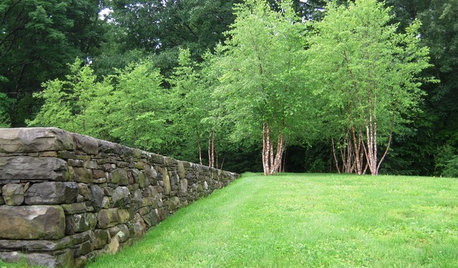
LANDSCAPE DESIGNFlood-Tolerant Native Trees for Soggy Soil
Swampy sites, floodplains, even standing water ... if you've got a soggy landscape, these trees are for you
Full Story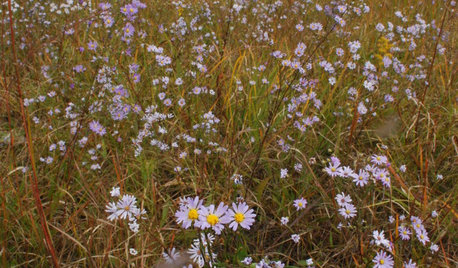
GARDENING GUIDES15 Native Flowers That Feed Native Bees
These perennials offer superfood to hundreds of bees and are gorgeous in their own right
Full Story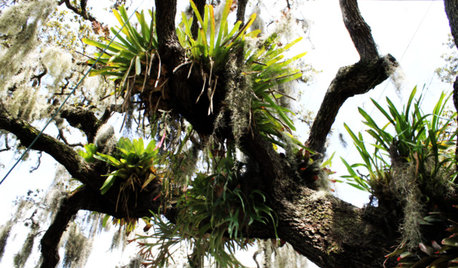
GARDENING GUIDESGot a Hot, Humid Landscape? Add Tropical Flair With Air Plants
Turn tree trunks and walls into lush canvases with plants adapted to the canopies of the rainforest
Full Story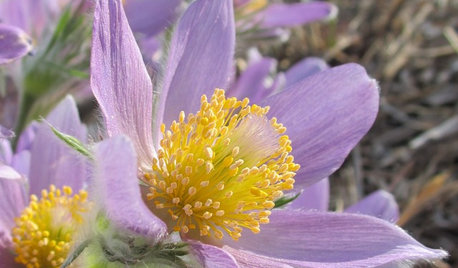
GARDENING FOR BUTTERFLIESGreat Native Plant: Pasque Flower
Get ahead with this early-blooming perennial, which has an unusual feature you've got to feel for yourself
Full Story
HOUSEPLANTSGot Bright Light but Lack Spare Time? Try Ponytail Palm
This low-maintenance houseplant has an exotic look and a drought-tolerant nature. Just give it lots of sun
Full Story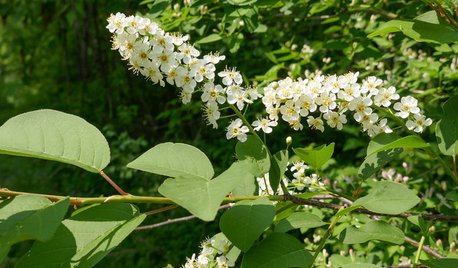
GARDENING GUIDESPrunus Virginiana Thrives Under Deciduous Trees
Plant chokecherry for showy white flowers favored by native bees in spring, and to provide nesting habitat and food for birds
Full Story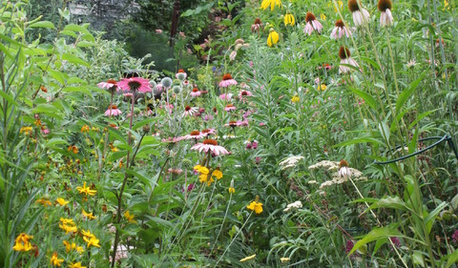
GARDENING FOR BUTTERFLIES3 Ways Native Plants Make Gardening So Much Better
You probably know about the lower maintenance. But native plants' other benefits go far beyond a little less watering and weeding
Full Story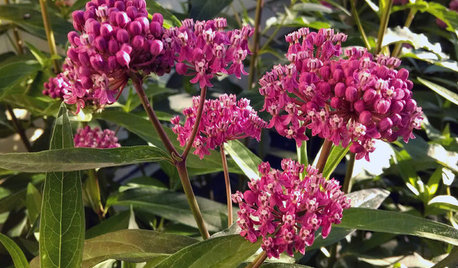
GARDENING GUIDESOh, Deer! 10 Native Flowers That Stand Up to the Herds
Keeping a garden amid hungry deer can be hard, but these plants should fare well
Full Story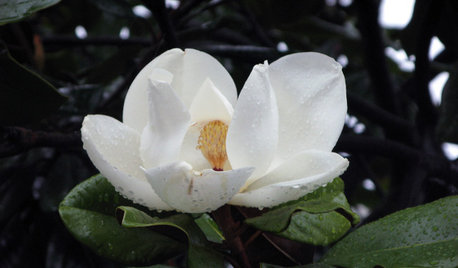
GARDENING GUIDES10 Top Native Plants for the U.S. Southeast
For a low-maintenance and wildlife-friendly landscape, use Southern natives that withstand heat and humidity
Full Story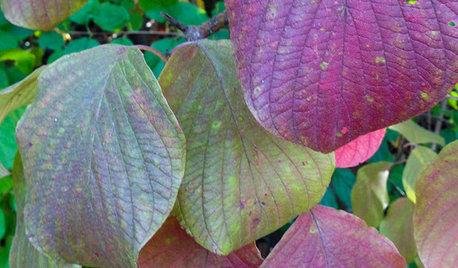
FLOWERS AND PLANTSCornus Rugosa, an Understated, Elegant Native Dogwood
Plant roundleaf dogwood for showy white flowers favored by pollinators in spring and for beautiful foliage in fall
Full Story



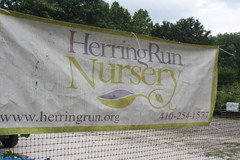

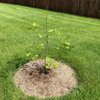
violetwest